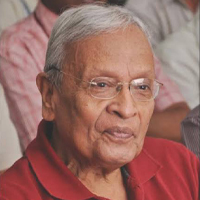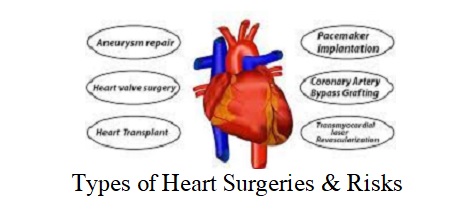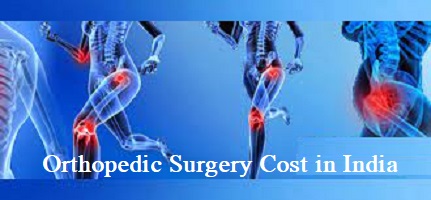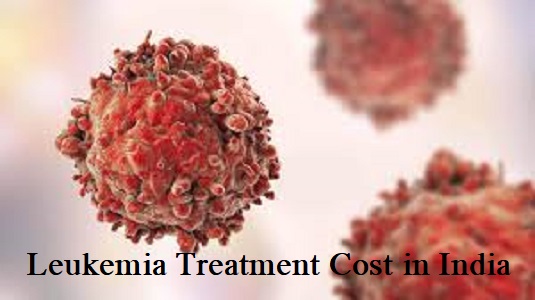Bone Cancer- Symptoms, Causes, Types, Treatment, Cost, and Survival Rate
Bone cancers, also known as osteosarcoma, are uncommon cancers that make up 0.2% of all cancers. Bone cancer is a rare cancer in which abnormal cells grow out of control inside the bones, destroying healthy bone tissue. Although it can start in any bone, the pelvis, arms, or legs are the most often affected areas. Primary and secondary bone cancers are the two categories for this type of cancer. Whereas cancers from other regions of the body metastasize to the bones, primary bone cancer starts in the bone cells. Bone cancers can be aggressive even though they make up fewer than 1% of all cancer cases. Bone cancer is common in children and young adults and has to be detected early for proper treatment.
What are the types of Bone Cancer?
- Osteosarcoma:It is the most common kind of bone cancer and mostly affects young people. It starts in the cells that generate new bone tissue. Osteosarcoma often occurs in the shoulder, hips, arms, legs, and areas of long bones. The hard tissue that makes up the outer layer of bones, particularly around the knee and upper arm, is where this aggressive cancer typically starts to grow.
- Ewing Sarcoma: Mainly affecting children and young people between the ages of 5 and 20, Ewing sarcoma is the second most prevalent type of bone cancer. This cancer includes a group of tumors that share characteristics and are thought to originate from the same cell types. Ewing sarcoma is common in the hips, ribs, shoulder blades, and long bones, including the legs. Ewing sarcoma is a tumor that grows quickly and can damage surrounding soft tissues as well as bones.
- Chondrosarcoma: Chondrosarcoma starts in the cartilage tissue and is more common in adults, especially those between the ages of 40 and 70. It is a slowly developing cancer, contrary to osteosarcoma and Ewing sarcoma. Chondrosarcoma is common in the shoulders, thigh regions, and pelvis. Subchondral tissue, the hard connective tissue that lies between bones, is where this cancer first appears.
- Chordoma: Children and teenagers may also be impacted by this uncommon bone cancer, which usually affects elderly individuals. In elderly people, it is usually located near the bases of the skull or spine. Chordoma often starts to form near the base of the skull and neck in younger people.
- Secondary Bone Cancers:When cancer spreads to the bones from other regions of the body, it results in secondary bone cancers. Lung cancer, prostate cancer, and breast cancer are common forms. Subsequent bone malignancies frequently present with pain, fractures, and hypercalcemia, or an excess of calcium in the blood.Excess blood calcium levels, or hypercalcemia, are common symptoms of secondary bone tumors. Other symptoms include discomfort and fractures.
What are the signs and symptoms of Bone Cancer?
Some of the common symptoms of bone cancer are:
- Bone Pain: The most common and initial sign of bone cancer is usually persistent, severe pain in the affected location. Although it may begin slowly the discomfort usually gets worse with time and becomes more constant. Movement may make it worse, and it might continue at night or while you’re sleeping.
- Swelling and Tenderness: Two common signs of bone cancer are swelling and tenderness near the affected bone. When a tumor is located inside or close to a joint, stiffness, and swelling of the joint may be seen. Bone pain may be accompanied by swelling in the surrounding soft tissues, which worsens the pain overall.
- Fracture and Weakened Bone: Bone cancer can cause the affected bone to deteriorate, greatly increasing the chance of fractures. A noticeable limp may be caused by fractures in the affected bone, particularly in the legs. Limping is a common sign of advanced bone sarcoma, indicating how far along the illness has progressed.
- Fatigue: Another typical sign of bone cancer is feeling excessively tired or exhausted. As the cancer spreads, fatigue might become greater and be related to the overall effects of the disease on the body.
- Unintentional Weight Loss: When bone cancer is in a more advanced stage, unexplained loss of weight without deliberate dietary or activity adjustments may indicate the disease.
- Fever and Other Rare Symptoms: Fever, chills, and night sweats are rare symptoms that some people with bone cancer may have. Anemia (low red blood cell count) may coexist with generalized sensations of being ill.
What are the causes of Bone Cancer?
Although the exact cause of bone cancer is still unknown, multiple factors have been linked to the development of abnormal growths in bone tissue. Some of the common causes of bone cancer include:
- Atypical Cellular Growth: Regular cellular functions include ongoing cell division, replacement of aging cells, and eventual cell death. But abnormal cells divert from this pattern, continuing to grow and creating tissue lumps that eventually develop into tumors. One of the main causes of bone cancer is the existence of abnormal cellular proliferation.
- Radiation therapy: Although it helps treat cancer by destroying harmful cells, radiation therapy also carries a paradoxical risk. People who get large doses of radiation as part of their cancer therapy may paradoxically acquire bone cancer in certain situations, particularly in cases of osteosarcoma.
- Chromosome Mutations: In 70% of cases, osteosarcoma, a particular type of bone cancer, has unusual chromosomal features. A major contributing factor to the development of bone cancer is chromosomal mutations. Though it is uncommon, certain mutations may be inherited and increase the risk of bone cancer.
- Genetic Mutations: The chance of getting bone cancer may be increased by specific genetic mutations. Although it is uncommon, certain people may be born with genetic predispositions that make them more prone to bone cancer.
What are the risk factors associated with Bone Cancer?
Although the exact cause of bone cancer is still unknown, several factors have been linked to an increased risk by doctors, such as:
- Inherited Genetic Syndromes: The risk of bone cancer is increased by a few uncommon genetic abnormalities that are handed down through families. Li-Fraumeni syndrome and inherited retinoblastoma are two notable cases. There may be a greater risk of bone cancer in those with some hereditary disorders.
- Paget’s Disease of Bone: This condition primarily affects elderly persons, and has been connected to a higher chance of developing bone cancer in later life. This benign bone disease causes abnormal bone regeneration and disintegration, which raises the chance of developing bone cancer.
- Cancer Radiation Therapy: There is a link between high radiation exposure and an increased chance of developing bone cancer in the future. This includes radiation from cancer radiation therapy. Bone cancers may be more common in those who have had radiation therapy for other cancers.
- Cancer Treatment: People who have had cancer treatment are more likely to develop bone tumors. This is especially true for people who have had radiation, stem cell transplants, or certain chemotherapy medications for other cancers. Cancer treatments may increase the risk of bone cancer.
- Radiation Exposure and Age: Bone cancer risk factors include being younger than 20 years of age. Also, radiation exposure increases the risk of getting bone cancer, whether from radiation therapy for a different cancer or a prior bone marrow transplant.
- Family History: One possible risk factor is a family history of cancer, particularly bone cancer. People who have close family members who have had bone cancer may be at greater risk.
What is the diagnosis for Bone Cancer in India?
Some of the common diagnostic procedures performed for bone cancer in India are:
Imaging Tests for Bone Cancer:
- X-rays: The first imaging technique used to see bone features is the X-ray. This rapid, non-invasive method finds irregularities or abnormalities in the bones and gives a wide perspective.
- CT Scans: Computed Tomography (CT) scans provide fine-grained pictures that make it possible to precisely evaluate bone architecture. With the use of this imaging technique, abnormalities may be accurately identified and localized by improving the vision of surrounding tissues and bones.
- MRI Scans: In addition to offering a thorough image of the bones, magnetic resonance imaging (MRI) scans also reveal surrounding tissues. Strong magnets and radio waves are used in this non-invasive method to create comprehensive pictures that provide information about soft tissues and improve overall diagnostic capabilities.
- PET scans: PET scans use Positron Emission Tomography (PET) to detect cancer cells by measuring how much more glucose they consume. This type of imaging helps identify and pinpoint malignant cells within the body by highlighting locations with increased metabolic activity by the injection of a radioactive glucose tracer.
- Bone Scans: An essential tool for identifying any metastases, bone scans evaluate the health of the bones. By injecting a small quantity of radioactive material into the circulation, it is possible to see abnormalities in the bone structure and identify regions with elevated or unusual bone activity.
Biopsy Procedures for Bone Cancer:
- Needle Biopsy: In a needle biopsy, tissue samples are taken using a thin needle under the guidance of imaging methods like CT scans. Through the use of this minimally invasive process, little tissue samples from questionable areas may be obtained, enabling an initial assessment to determine the presence or absence of cancer.
- Surgical Biopsy: This more intrusive method involves removing the entire tumor or just a section of it for a thorough examination. Under general anesthesia, this method guarantees a sufficient tissue sample for an extensive microscopic analysis. A surgical biopsy provides vital information for treatment planning by confirming the kind of cancer, describing the tumor, and evaluating its development rate.
Bone cancer blood tests: Blood tests are essential for diagnosing bone cancer because they measure the levels of enzymes connected to blood cancer. These examinations set baseline values for monitoring the treatment in addition to identifying any possible abnormalities.
Multidisciplinary Approach in the Treatment of Bone Cancer: A collaborative group of skilled medical professionals with a focus on treating bone tumors creates a comprehensive approach. This makes sure that biopsy operations are carefully planned and carried out, integrating individual skills to improve diagnosis accuracy.
Determining the Stage and Grade of Bone Cancer: Precise staging and grading are essential for treatment planning of bone cancer. Bone scans offer a thorough picture of bone involvement and help determine the cancer stage. By evaluating the aggressiveness of cancer, imaging tests (PET, MRI, and CT scans) help to grade tumors according to microscopic features, which in turn helps to guide treatment options.
What are the different stages of Bone Cancer?
Roman numbers 0 through IV are used to represent the staging of bone cancer, and they provide an essential framework for determining the disease’s severity and prognosis. Smaller and less aggressive tumors are usually seen in the early stages (0 to II), which suggests that the problems are limited and treatable. But when the disease progresses to stages III and IV of staging, it becomes more complicated, including bigger tumors and perhaps spreading to other body areas.
- Stage 1: It is characterized by a tumor that is low grade and cells that cause cancer are found in the bone.
- Stage 2:The tumor gets more advanced in grade. Although they stay confined, cancer cells may become more aggressive.
- Stage 3:The tumor grows to a significant size and cancer cells spread to other parts of the same bone.
- Stage 4:It symbolizes the advanced phase and the cancer has spread outside the bone, and extends to nearby tissues and distant organs like the liver or lungs.
What are the treatment options for Bone Cancer in India?
The type, stage, general health, and patient preferences all play a role in the treatment plan that is selected for bone cancer patients in India. It is typical to use a multidisciplinary strategy that includes orthopedic surgeons, radiation oncologists, and oncologists. Different treatment methods used for bone cancer in India are:
- Surgery: The total excision of the cancerous tumor is the main objective of surgery. Surgeons try to remove the tumor intact and as much of the surrounding healthy tissue as possible by using specialized procedures. The emphasis on preserving limbs through methods like bone grafts or artificial replacements has led to an increase in the number of limb-saving surgeries. An amputation is still an option in situations when there is significant bone deterioration, even if it is becoming less frequent due to improved treatments.
- Chemotherapy: To eradicate cancer cells, chemotherapy uses strong medications injected intravenously. The kind of bone cancer determines the success of treatment. It is essential for treating osteosarcoma and Ewing sarcoma but is often ineffective for chondrosarcoma.
- Radiation therapy: Radiation therapy targets and destroys cancer cells by using high-energy beams, such as X-rays. It is commonly used to reduce tumor size before surgery so that removal is simpler. After surgery, it is used to remove any cancer cells that may still be present.
- Medication: A number of drugs are essential to the treatment of bone cancer. For both primary and metastatic bone tumors, chemotherapy treatments are used, and painkillers are used to reduce swelling and discomfort. Bisphosphonates are used to preserve bone structure and stop bone loss. Immunotherapy medications seek to strengthen the body’s defenses against cancer cells, whereas cytotoxic treatments try to prevent or slow the development of malignant cells.
- Targeted therapy: Targeted therapy targets specific changes in the DNA, proteins, or cells around cancer cells. It is carefully included into the all-inclusive therapy plan, guaranteeing a customized and successful strategy for bone cancer treatment in India.
What is the success rate of Bone Cancer Treatment in India?
Across different phases, the average success rate for bone cancer treatment in India is an outstanding 75%. These positive results are a result of the multidisciplinary strategy that includes radiation treatment, chemotherapy, and surgery. The average recovery period for patients is only one month, demonstrating the efficacy of the all-encompassing treatment methods. The success rates highlight India’s dedication to offering cutting-edge and effective bone cancer treatment, making it a viable travel destination for anyone looking for the best possible results in their battle against this difficult illness.
What is the cost of Bone Cancer Treatment in India?
The average cost of bone cancer treatment in India is $6,700 to $10,700, which includes a 7–14 day hospital stay. This price covers a number of the all-inclusive treatment’s elements, including radiation, chemotherapy, and surgery. India’s medical facilities draw patients looking for efficient and cost-effective solutions for treating bone cancer since they offer high-quality care at a relatively low cost.
Top Hospitals for Bone Cancer Treatment in India
India is home to a number of top hospitals with an outstanding track record for treating bone cancer. These top hospitals for bone cancer treatment in India offer complete care for patients with bone cancer since they are furnished with cutting-edge technology and use a multidisciplinary team. Expert teams made up of orthopedic surgeons, support personnel, and experienced oncologists work together to create individualized treatment plans. In these top hospitals, patients may expect to have access to cutting-edge diagnostics, sophisticated surgical procedures, chemotherapy, and radiation therapy.
- Fortis Hospital, Gurgaon
- Indraprastha Apollo Hospital, New Delhi
- Max Hospital, Saket
- Apollo Hospitals,Greams Road, Chennai
- Artemis Hospital, Gurgaon
- Medanta – The Medicity Hospital, Gurgaon
- MGM Healthcare, Chennai
- BLK Hospital, New Delhi
Best Doctors for Bone Cancer Treatment in India
Highly qualified and experienced doctors with a focus on treating bone cancer may be found in India. These best doctors for bone cancer treatment in India are well-known for their proficiency in the identification, management, and treatment of several forms of bone cancer. Famous for their dedication to patient care, these experts utilize a multidisciplinary methodology, cooperating with orthopedic surgeons, oncologists, and other medical specialists to guarantee all-encompassing and customized treatment plans.
- Sandeep Batra – Max Super Specialty Hospital Saket, New Delhi, India
- Ankur Bahl – Fortis Memorial Research Institute, New Delhi, India
- Praveen Kumar Garg – Indraprastha Apollo Hospitals, New Delhi, India
- Niranjan Naik – Fortis Memorial Research Institute, New Delhi, India
- Sameer Kaul – Indraprastha Apollo Hospitals, New Delhi, India
- Kamal Verma – Artemis Hospital, Gurgaon, India
- Suman Karanth Gupta – Medanta The Medicity, Gurgaon, India
- Devavrat Arya – Max Super Specialty Hospital Saket, New Delhi, India
Contact Form
Attach Medical Report
Top Doctors & Surgeons in India
Why Choose Us

Personalized Care
24x7 Supports
Top NABH and JCI accredited Hospitals
Free Cost Estimation & Medical Opinion from Specialist
Get Free Tele/Video Consultation
Visa and Traveling Assistance
Post-surgery with Assistance in Follow-ups














